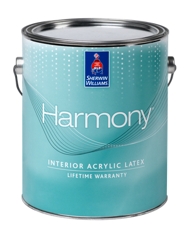 That’s why I became a Green Accredited Professional through the Sustainable Furnishings Council, a non-profit coalition of suppliers, manufacturers, retailers and designers dedicated to promoting sustainable practices. The certification process involved learning about the hazards of chemicals in seemingly harmless items like carpeting, studying eco-friendly manufacturing methods and materials, and familiarizing myself with the array of green products that have emerged in recent years.
That’s why I became a Green Accredited Professional through the Sustainable Furnishings Council, a non-profit coalition of suppliers, manufacturers, retailers and designers dedicated to promoting sustainable practices. The certification process involved learning about the hazards of chemicals in seemingly harmless items like carpeting, studying eco-friendly manufacturing methods and materials, and familiarizing myself with the array of green products that have emerged in recent years. Last week, I shared what I learned with the Women’s Council of Realtors, an Omaha group which invited me to speak at its monthly meeting and of which I am an affiliate member. Today and in coming blog posts, I’d like to share with you how easy making green choices can be -- a fitting topic with Earth Day approaching this Sunday!
I thought the best way to show this would be to walk you through some of the eco-friendly choices I made during a recent project at my own home.
Recycle carpet
Over 5 BILLION pounds of carpeting are dumped in U.S. landfills every year. Instead of ditching our old carpet, we recycled it. Carpet and furniture stores increasingly have partnered with manufacturers to be environmentally responsible. While recycling carpet might not be available everywhere, it’s worth asking if yours -- and even the pad, too -- can be put to use elsewhere instead of landing up in a landfill. Ask your carpet installer if they will take your used carpet to the recycling center for you or take it to your local recylcing center. In Omaha, the place to recycle carpet and pad is the City of Omaha Southeast Recycling Center http://www.green-watch.org/take-action/recycling-center.cfm?centerID=195. If your carpet is in reasonably good shape, consider donating it to the Habitat for Humanity Restore. To find a Restore near you, go to: www.habitat.org/restores
Choose materials made from renewable resources
We replaced our kitchen’s wood laminate flooring with bamboo. It’s hardy, durable and looks similar to wood flooring but helps deter harvesting of old-growth forests. It also comes in a wide variety of looks. We absolutely love it.
Use no- or low-VOC paints
 Volatile organic compounds (VOCs) are the gases emitted from certain solids or liquids, such as paints, furnishings, glues and building materials. Because they may have short- and long-term adverse health effects, why not avoid them where you can? One of the easiest ways is to simply choose a no- or low-VOC paint. These are widely available today -- you just have to ask! We used Sherwin-Williams' Harmony Interior Acrylic Latex in color Adaptive Shade.
Volatile organic compounds (VOCs) are the gases emitted from certain solids or liquids, such as paints, furnishings, glues and building materials. Because they may have short- and long-term adverse health effects, why not avoid them where you can? One of the easiest ways is to simply choose a no- or low-VOC paint. These are widely available today -- you just have to ask! We used Sherwin-Williams' Harmony Interior Acrylic Latex in color Adaptive Shade.Re-use furniture
I recovered several pieces of living room furniture instead of buying new. When you re-upholster, you provide work for local businesses and avoid transportation impact -- gas emissions from all the boats and trucks that it takes to transport goods. Re-upholstering is not a one-size-fits-all solution, but in my case the furniture was in good condition, the right scale for the room and of high quality. It just needed some "refreshing" with fabrics in a new color palette and style.
Buy responsibly manufactured furniture
When I did buy new furniture instead of repurposing existing pieces, I purposely paid attention to how--and where--it was made.
A lot of furniture is made from forests that are “clearcut,” or leveled by giant machines, destroying entire forests and their diverse ecosystems. But some companies only use wood obtained from forests managed thoughtfully. Public outcry against destructive wood-mining practices has fed a healthy demand for responsibly forested wood furniture. It’s much easier today than several years ago to find furniture certified by the Forest Stewardship Council, an organization that promotes responsible stewardship of the world’s forests through every step in the manufacturing process.
In the end, I bought end tables made by an American manufacturer using wood sources approved by the FSC. Much like the paint, the recovered furniture and the bamboo flooring, the end tables don’t "scream" that they are environmentally friendly.
Use compact fluorescent bulbs
Compact fluorescent bulbs, commonly referred to as CFLs, save energy and last longer, therby minimizing impact on the environment. CFL's can be safely recycled at any big-box hardware store, too, taking the worry out of how to dispose of them properly.
Here's the finished product--does it look like a tree-hugger lives here?
At every decision point in your decorating--and daily living--you can ask “is this the right thing to do for our environment.” And today, thanks to the many options available, you can make the right decision for Mother Earth while not sacrificing aesthetics. And of course, if you need help with your earth-friendly decorating, email me at aboesen@decorandyou.com.
Happy Earth Day!


.jpg)



No comments:
Post a Comment